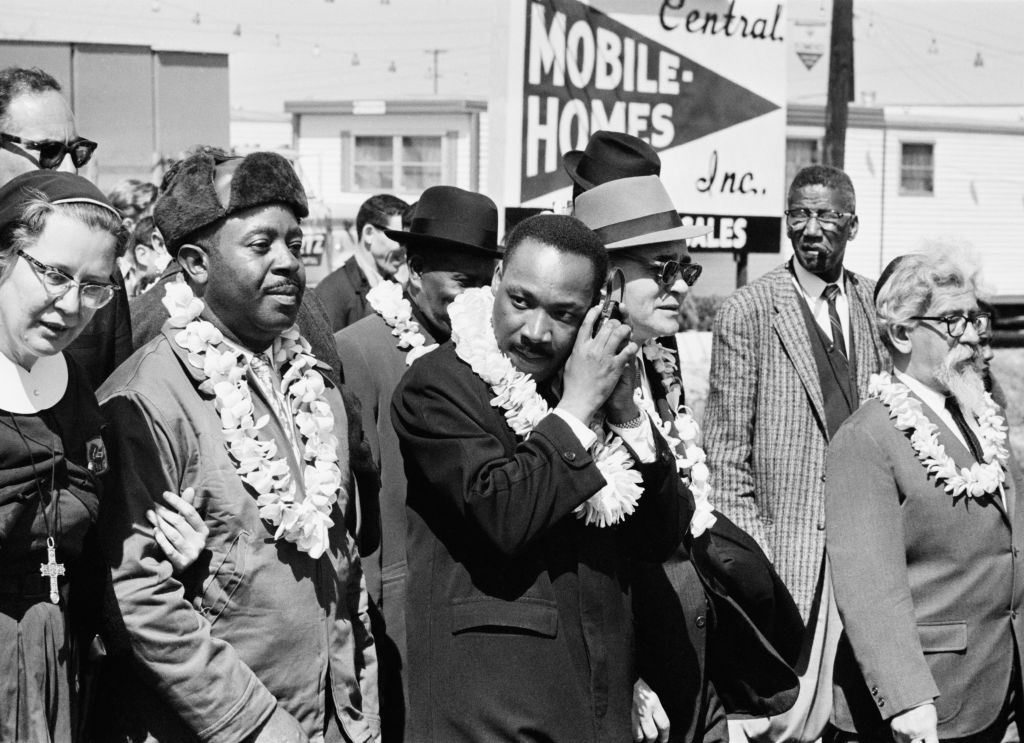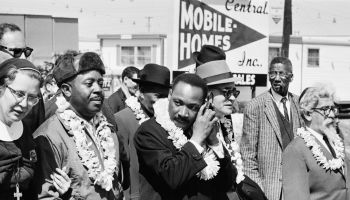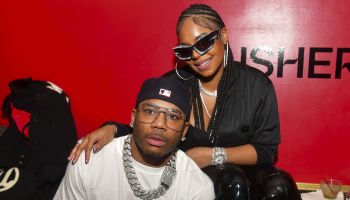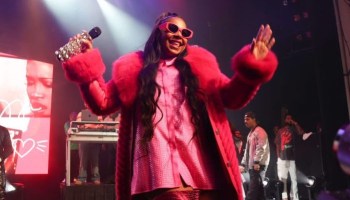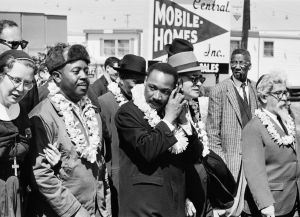
Getty Images
Getty Images
The untold story behind the aloha, a Hawaiian word that’s meaning is compassion, peace and love. This ran throughout the Selema-to-Montgomery march in Alabama 50 years ago.
During the March 21, 1965, march, you see Dr. Martin Luther King, John Lewis and many other demonstrators wearing the “iconic Hawaiian” flowery leis around their necks.
The history of the Leis from Hawaii to Alabama started in 1964 when Dr. King deceived a lecture to the University of Hawaii. It was than and it was there that he met Rev. Abraham Akaka, the brother of Hawaii’s future U.S. Sen. Daniel Akaka who was the first Native Hawaiian ancestry.
In 1965, Rev. Akaka sent the marchers the gifts of bright white leis from the Pacific Ocean sending the symbolic message that affirmed Asian-Amercans had support for the civil rights movement.
“Now, 50 years later, Lewis and Hawaii native, Barack Obama will join Asian-American lawmakers Sen. Mazie Hirono and Rep. Mark Takai in the “Bloody Sunday” to pay their homage to the civil rights movement.”
“I will honor the men and women who risked their lives in the name of equality of Bloody Sunday by presenting civil rights leaders with flower leis, just as Rev. Abraham Kahikina Akaka did during the third Selma march in 1965,” Sen. Mazie Hirono said.
“As an ethnic minority, I am thankful for those that paved the way for the freedoms and liberties that all of us as Americans enjoy,” Takai said. “They suffered insults and physical harm, yet their spirit remained unbroken.”
That march, “Bloody Sunday“, help mark a turning point for civil rights that today continues to have meaningful effects for minorities including the Asian Americans.
